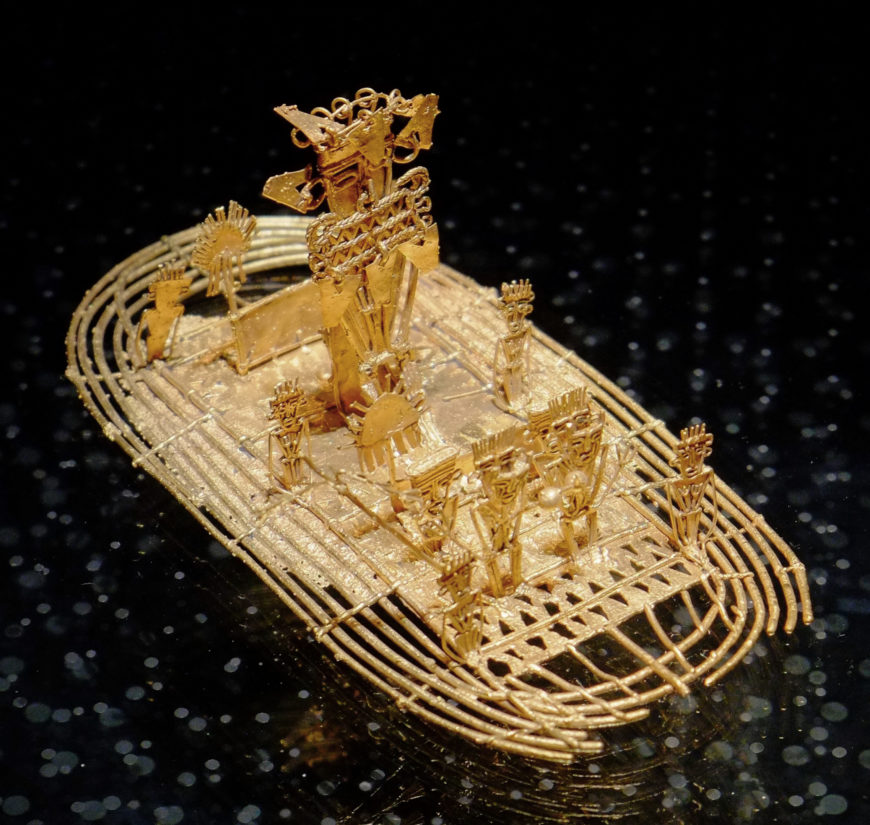
Muisca Raft, 600–1600, cast gold alloy, Museo del Oro (Gold Museum), Bogotá, Colombia (photo: Reg Natarajan, CC BY-SA 2.0)
The Muisca
Who were the people behind the myth of “El Dorado” and their supposed lost city of gold? It was the Muisca, an advanced civilization from the Eastern Cordillera of the Colombian Andes, dating from 600 C.E. to 1600 C.E. However, “el dorado” was not a city, but rather a ruler, who adorned himself with gold and was called “el dorado” (a term coined later by the Spanish meaning “the golden one”). In 1636, under the leadership of Gonzalo Jiménez de Quesada, the Spanish began the conquest of Colombia, and in their quest to exploit its material riches, crafted this myth.
The Muisca were the most advanced of the Chibcha-speaking people and controlled an expanse of land that stretched from Bogotá to Tunja. Their confederation of states consisted of various tribes, each ruled by a separate ruler. While leaders were primarily male, inheritances were passed down from the maternal side, a possible reason for the large number of female figurines discovered among the Muisca. Through an established trade network, the Muisca traded salt for gold, becoming highly advanced metallurgists, and developing sophisticated casting techniques and special metal alloys.
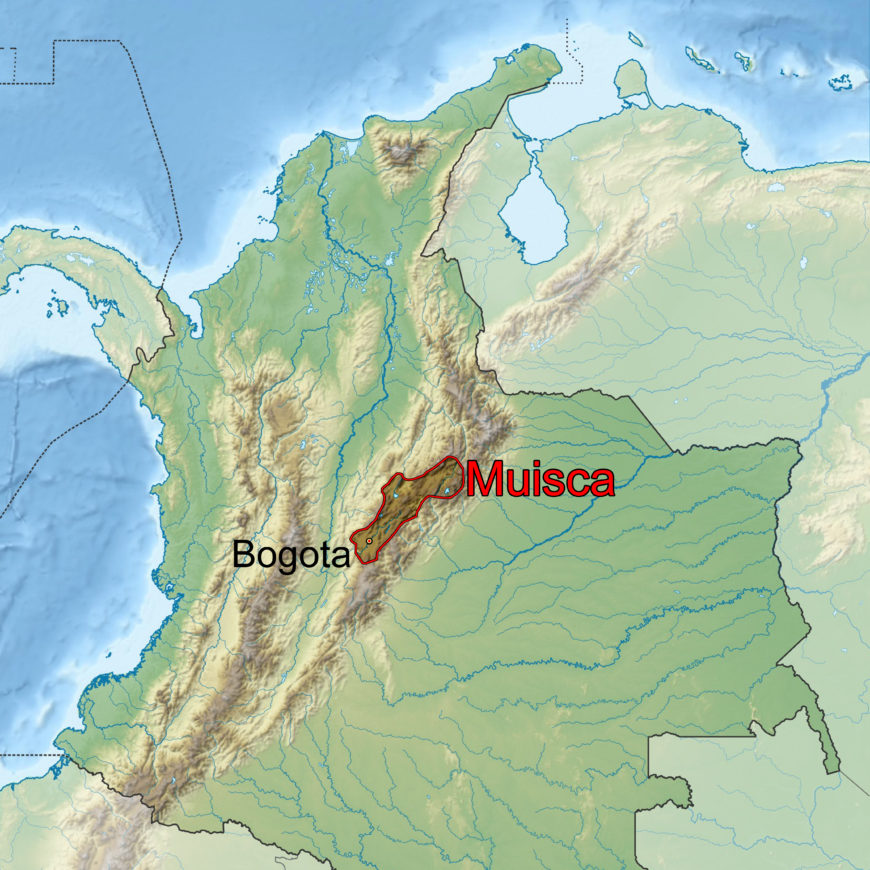
Map showing the Muisca territory in modern-day Colombia (map: Nwbeeson, CC BY-SA 4.0)
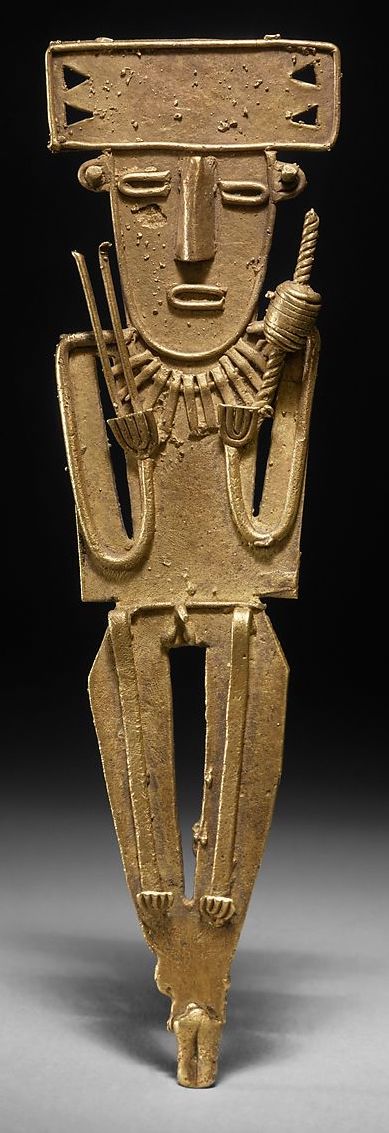
Muisca artist, Male Figure (tunjo), 10th–16th century, gold, Colombia, Guatavita Lake region (The Metropolitan Museum of Art)
While Spanish conquerors spoke of a lost “City of Gold” located at the bottom of Lake Guatavita, they also described the initiation ritual through which the Muisca would honor a new leader by covering his body in gold dust and then submerging him, his raft, and other offerings into the sacred lake.
The ritual consisted of making offerings to the deity Chibchachun, who was the god of merchants and goldsmiths. The types of offerings placed on the raft consisted of emeralds, a natural resource in Colombia, and gold, typically in the form of tunjos, or votive pieces that depict either human or animal figures.
The Male Figure is an example of the symmetry and complexity with which these tunjos were made. Made of flattened and simple geometric shapes, the figure’s face consists of spiral, almond, rectangular, and triangular shapes. In one hand, he carries what is most likely a staff. Figurative tunjos—like the Male Figure—usually depicted warriors, mothers, and chiefs, and offer important insights into the daily life of the Muisca. Made through the lost wax casting process, tunjos also feature thin gold threads that delineate the face, arms, and legs, adding another sculptural and textural dimension to an otherwise flattened surface.
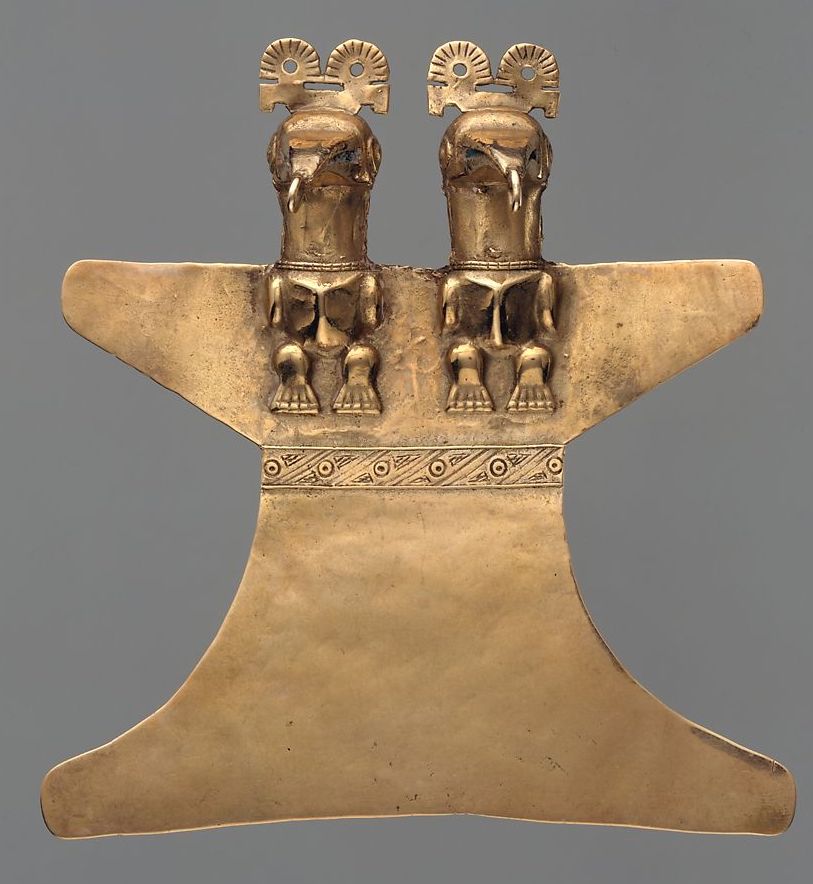
Muisca artist, Double Eagle Pendant, 10th–16th century, gold (cast alloy), Colombia, Guatavita Lake region (The Metropolitan Museum of Art)
The Double Eagle Pendant, perhaps used as a protective emblem, displays another style of Muisca goldwork, with two rounded, three-dimensional eagles perched atop a flat, flaring shape that is suggestive of wings. While somewhat more organic in form than the Male Figure, they are also rendered with a high level of abstraction and a horizontal band of decorative pattern. In contrast with tunjos and the Muisca Raft, pendants typically featured a high polish and smooth surface.
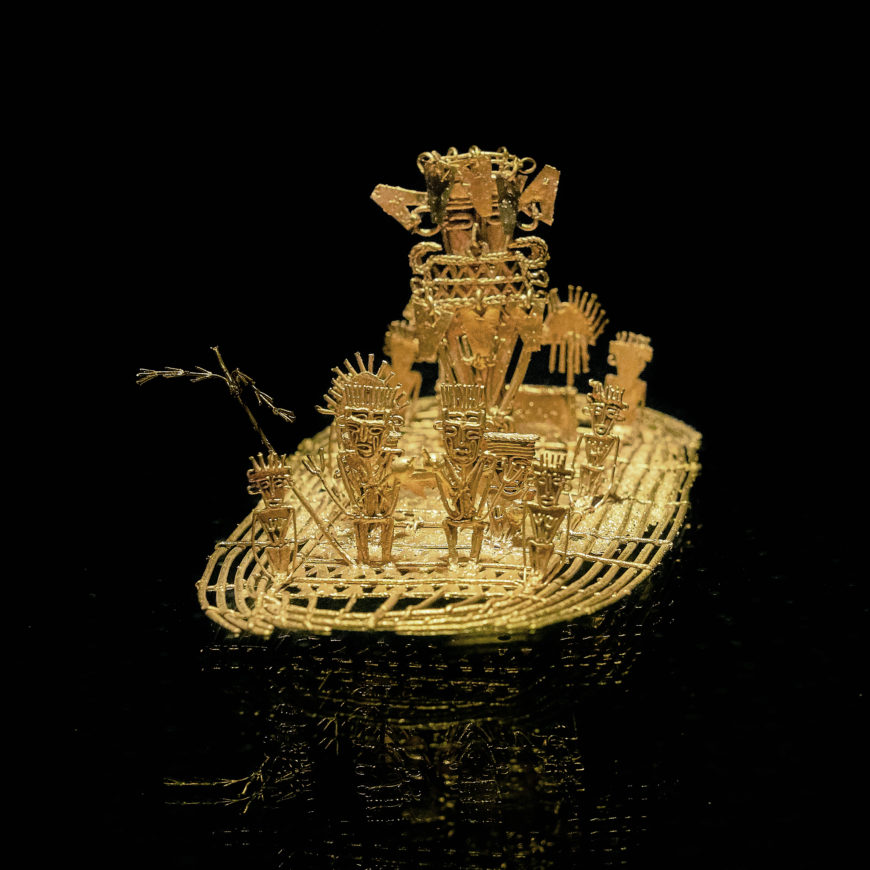
Muisca Raft, 600–1600, cast gold alloy, 7.6 x 4 x 4 inches (photo: Pedro Szekely, CC BY-SA 2.0, Museo del Oro, Bogotá, Colombia)
Muisca Raft
One of the most famous Muisca artworks is known as the Muisca Raft. It was discovered in Pasca, to the south of Lake Guatavita, but it is believed to depict the initiation ceremony of a new ruler. Perhaps the most impressive of Muisca tunjos, it is made of tumbaga, a metallic alloy that is more than eighty percent gold. This type of alloy, which consists of gold mixed with small portions of silver and copper, gives off a unique pinkish-yellow glow, a quality that the Muisca admired for its association with the sun deity.

Muisca Raft (detail), 600–1600, cast gold alloy (photo: Reg Natarajan, CC BY 2.0, Museo del Oro, Bogotá, Colombia)
While the physical characteristics of the Muisca Raft are impressive, its symbolic associations are also of great importance. Despite being made entirely of metal, the raft has the texture and shape of wood. This is in keeping with the descriptions of the ritual, which placed the leader on a wooden raft. We can easily identify the ruler through the example of hieratic scale (when size is relative to importance and not physical appearance) that depicts the ruler larger than any other figure on the raft.
The heavily adorned figure stands prominently at center, flanked by twelve smaller figures wearing masks, carrying canes, and rowing. All figures follow the Muisca standard with an enlarged upper body offset by disproportionately small limbs. Another characteristic of the Muisca is the unpolished gold surface and refined openwork design, a testament to the advanced artistry of Muisca metalworking.
From the moment it was discovered in 1969, the people of Pasca have struggled to preserve the Muisca Raft in Colombia. Another raft discovered in 1856 was lost at sea while traveling to an exhibition in Germany. This unfortunate incident, combined with the looting and destruction that took place in colonial Colombia, explains why the Muisca Raft has never left the Museo del Oro in Bogotá, Colombia.

